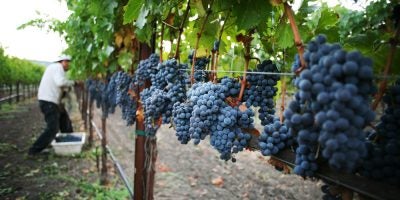Abstract:
How and how well growers manage the risks inherent in agriculture have direct welfare implications for producers and consumers at both local and societal levels. While better weather, pest and disease forecast information are rapidly disseminating among producers and are often touted as promising inputs to production and risk management, little is known about how this new information actually shapes producer behavior in practice. Better forecast information can benefit growers by improving their capacity to manage disease and pests effectively, but we must jointly consider multiple margins of adjustment in order to properly understand their response to this improved information. Using the case of California winegrape growers and high resolution panel data that includes plot-level treatments for powdery mildew, we characterize growers’ response to a popular powdery mildew risk model that generates forecasts in the form of a daily risk index (PMI). Our analysis suggests that growers using the PMI adjust their powdery mildew management strategies along several margins of adjustment, including shifting from sulfur to more potent synthetic fungicides, increasing dosage rates, and using multiple products when the risk is high according to the PMI. The observed mix of these response adjustments varies by location and by output value. While field trials that only allow for treatment timing adjustments have suggested that the environmental benefits of the PMI could be substantially positive, our analysis of pesticide use risks to soil, surface water, groundwater, and air suggests that the net environmental impact of growers’ multi-dimensional response to the PMI may actually be negative.
See PDF of the paper here: Multi-Dimensional Responses to Risk Information: How do Winegrape Growers Respond to Disease Forecasts and to What Environmental Effect? Travis J. Lybbert, Nicholas Magnan and W. Douglas Gubler (2012). RMI-CWE Working Paper Number 1203.




